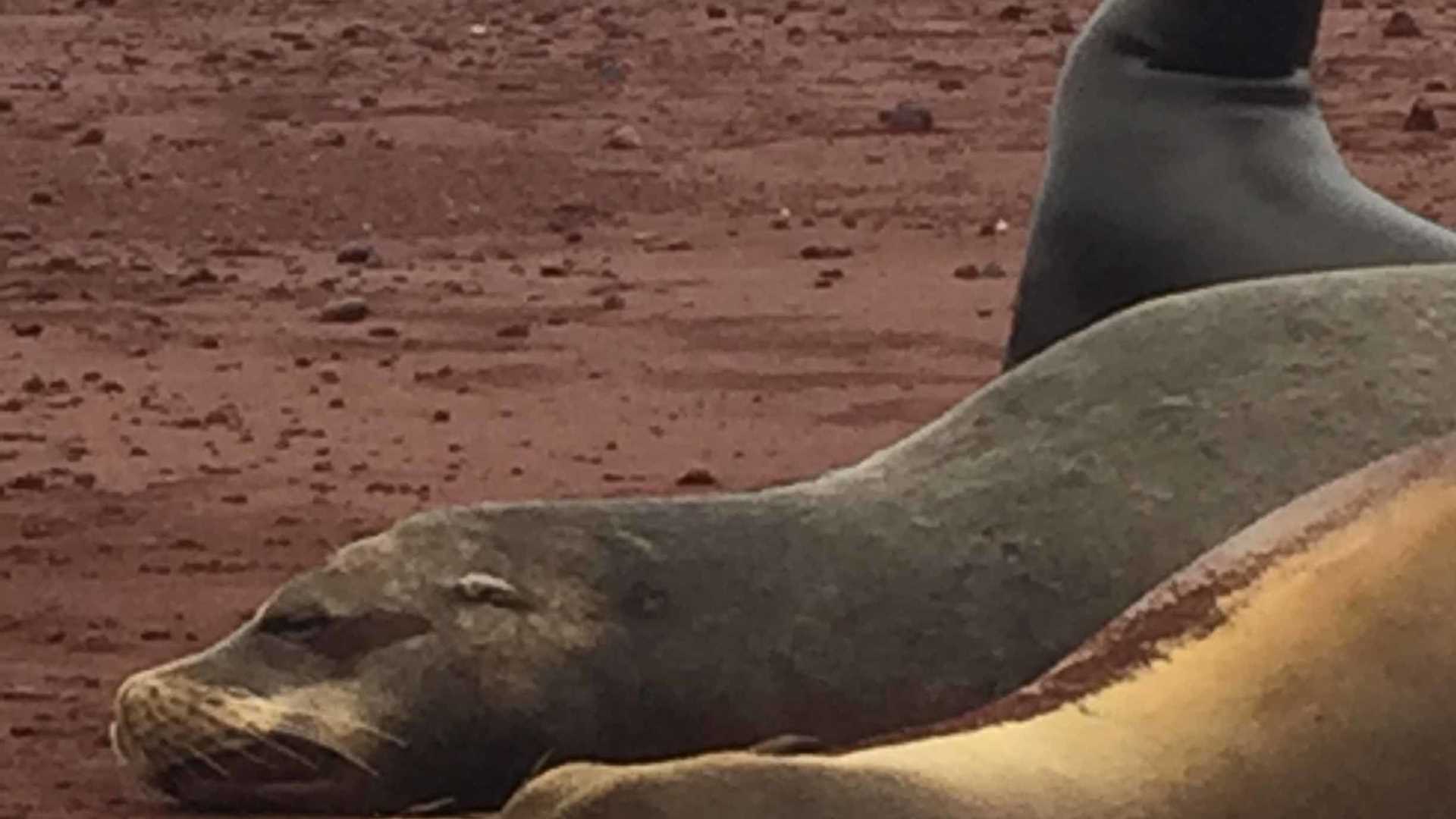Guests onboard National Geographic Endeavour II spent the day exploring a couple of the centrally located islands, North Seymour and Rabida. Our first excursion was a dry landing on the southern facing side of North Seymour, an island famous for its year-round mating season of the frigate birds. Guests were immediately greeted by a slew of frigate birds speckling the palo santo trees with their red membrane pouches, wings majestically outstretched; this is the mating display of the male frigate birds. This visitor site gives us a special glimpse of the entire life history of these magnificent creatures, from hatchling to juvenile to sub-adult to adult, the frigates can be observed at every life stage at North Seymour.
Guests also observed the beloved Galapagos sea lion at several different life stages. There were several nursing females with pups, some of which were only days old. We discussed the evolutionary history of these unique animals and some of the adaptations that make them well suited for the Galapagos environment. Guests savored tender moments between the mothers and their offspring; being that these are mammals, they are quite social and the communication between mothers and their young is observed quite clearly. There were several blue-footed boobies on the trail, some juveniles quite literally standing in the middle of our path! We observed their beautiful blue feet and discussed the rarity of such a color in nature.
Once back onboard, guests gathered their snorkel gear and received practical tips on how to get the best experience during our aquatic adventures. Our snorkel excursion was at Rabida Island, a beautiful place both for is landscapes and marine life. Some guests chose beach snorkeling, while others opted for the deep water outing. We observed tropical fishes and marine iguanas. Perhaps the most spectacular moment was when several Galapagos fur seals joined us in the water, twirling their bodies in front of us in a cloud of bubbles.
We spent the rest of the afternoon strolling along the striking red sand beach of Rabida Island, the shoreline full of Galapagos sea lions. Guests took advantage of the spectacular light conditions to get some shots of these unique creatures covered in red sand. Our expedition photo instructor offered pro tips to guests interested in improving their photographs.







